09-17-2025
On-Demand Courses
Complete CEU at Your Pace - Watch our video courses anytime, anywhere.
Instant Certificate - It's ready the moment you complete the quiz.
Accredited Across North America - Valid for U.S. state licenses and Canada.
Explore Our Course Library
Shining Light on EPDs - Comparing the Environmental Performance of Building Products


FREE
Description
Over the past few years, demand for tools like Environmental Product Declarations has been growing among the green building industry. Primarily intended for a specialized audience, life cycle assessments and their results displayed in standardized documents named EPDs are out in the open for everyone to see. However, EPDs are not mere documentation and are very technical. Green Building Programs, such as LEED, requiring EPDs for credit achievement have forced unspecialized professionals to understand it. This course is intended to give you the tools you need to get your head around EPDs and be able to compare them if needed.
Credits: 1 AIA HSW + 1 GBCI (USGBC/CAGBC) + 1 LEED SPECIFIC - BD+C + 1 LEED SPECIFIC - ID+C + 1 AIBD Elective + 1 AIBC Core LU + 1 AAA Structured LU + 1 OAA, OAQ, SAA, MAA, AAPEI, NWTAA

Length: 1h
Sponsored by: Vertima
Today’s Radiator: Historic Integrity Paired With Optimal Heating Performance


FREE
Description
For architects, purposeful materials selection is a priority in any design. For restorations and renovations, product selection means more. Designers who re-use the building’s existing materials not only preserve historic beauty but also reduce the embodied carbon of the building. On a rare occasion, a re-used product can deliver even more. This course features that one product – the cast-iron radiator. Of course, we’ll discuss the history and beauty of the radiator. Most importantly, we’ll talk about how a century-old product can deliver a modern, energy-efficient heating system with less environmental impact than other options.
Credits: 1 AIA HSW + 1 GBCI (USGBC/CAGBC) + 1 AIBD Primary + 1 Sustainable Design + 1 AIBC Core LU + 1 AAA Structured LU + 1 OAA, OAQ, SAA, MAA, AAPEI, NWTAA
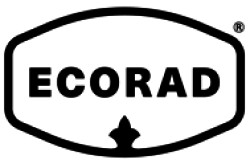
Length: 1 hour
Sponsored by: Ecorad
Environmental Product Declarations (EPDs) and Graphite Polystyrene Insulated Vinyl Siding


FREE
Description
This 0.5 credit course provides greater detail about the environmental performance declarations (EPDs) for both graphite polystyrene and vinyl siding and how these can be used to help guide sustainable design decision-making.
Presented By: Jack Armstrong,
Credits: 0.5 AIA HSW + 0.5 GBCI (USGBC/CAGBC) + 0.5 AIBC Core LU

Length: 1h
Sponsored by: BASF
Acetylated Wood: A Natural and Durable Choice for Siding, Decking, and More


FREE
Description
This course discusses the process of wood acetylation, the resulting changes to wood, applications for acetylated wood, its green credentials and several case studies involving acetylated wood.
Credits: 1 AIA HSW + 1 GBCI (USGBC/CAGBC) + 1 AIBD Primary + 1 Sustainable Design + 1 AIBC Core LU + 1 AAA Structured LU + 1 OAA, OAQ, SAA, MAA, AAPEI, NWTAA + 1 Climate Action (OAA)

Length: 1h
Sponsored by: Accsys Technologies - Titan Wood Inc.
Acetylated Wood: A Natural and Durable Choice for Siding, Decking, and More
"Good course. Definitely useful for my work in residential apartment buildings. Will surely look for areas to specify."
- Annette


FREE
Description
This course discusses the process of wood acetylation, the resulting changes to wood, applications for acetylated wood, its green credentials and several case studies involving acetylated wood.
Credits: 1 AIA HSW + 1 GBCI (USGBC/CAGBC) + 1 AIBD Primary + 1 Sustainable Design + 1 AIBC Core LU + 1 AAA Structured LU + 1 OAA, OAQ, SAA, MAA, AAPEI, NWTAA

Length: 1h
Sponsored by: Accsys Technologies - Titan Wood Inc.
Hotel Marcel & Sinclair Hotel-A case study on Hotel Energy Efficiency
"Very interesting material and presentation on new technologies greatly increasing buildings energy efficiency."
- Yvona


FREE
Description
In the last few years, two hotels in the US stand out regarding hotel efficiency, the Hotel Marcel and the Sinclair Hotel.
The Sinclair Hotel installed low voltage lighting and other technologies with state of the art technology and lowered the overall cost of their overhead by over 35% percent.
The Hotel Marcel took this one large step further and is the first net-zero energy hotel. Both of these hotels are registered as historical buildings.
This presentation focuses on the low voltage technology that is making it happen!
Credits: 1 AIA HSW + 1 GBCI (USGBC/CAGBC) + 1 AIBD Elective + 1 Sustainable Design + 1 Climate Action (OAA)
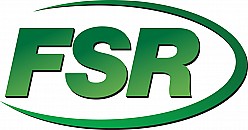
Length: 1 hour
Sponsored by: FSR Inc
Durable Timber: Designing for the Life Cycle of Embodied Carbon
"Very importamt topic for Architects who can lead in designing & building a sustainable environment."
- Ricardo


FREE
Description
Architects have always had to adapt to a variety of performance indicators like energy use for their buildings. Recent years have seen a complex shift towards embodied carbon as an indicator. This shift has occurred without a full understanding of the principles of life cycle analysis (LCA), that go into the data sets for carbon. The rise of mass timber has fueled a broad interest in wood and bio-sourced building materials as a potential carbon storage solution. However, there is a real difficulty of capturing complex and regional variations in the simple frameworks of most carbon comparisons. There are competing agendas, methodology, and data presented to specifiers from all sides. Even the best advocates for timber must be humble about...
Credits: 1 AIA HSW + 1 GBCI (USGBC/CAGBC) + 1 AIBD Primary + 1 Net Zero (ZNCD) + 1 Sustainable Design + 1 AIBC Core LU + 1 AAA Structured LU + 1 OAA, OAQ, SAA, MAA, AAPEI, NWTAA + 1 Climate Action (OA

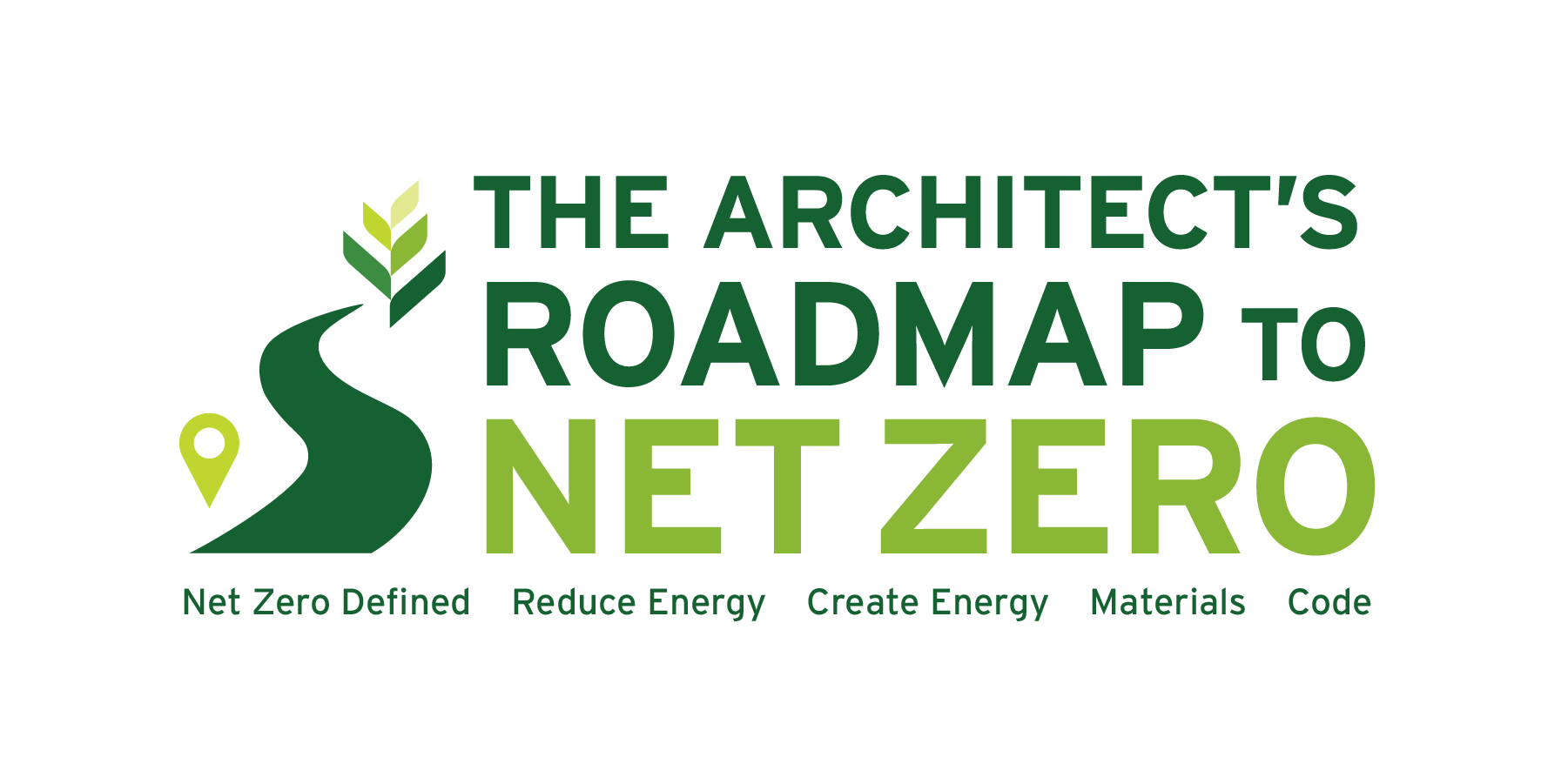
Length: 1h
Sponsored by: QWEB (Quebec Wood Export Bureau)
Today’s Radiator: Historic Integrity Paired With Optimal Heating Performance


FREE
Description
For architects, purposeful materials selection is a priority in any design. For restorations and renovations, product selection means more. Designers who re-use the building’s existing materials not only preserve historic beauty but also reduce the embodied carbon of the building. On a rare occasion, a re-used product can deliver even more. This course features that one product – the cast-iron radiator. Of course, we’ll discuss the history and beauty of the radiator. Most importantly, we’ll talk about how a century-old product can deliver a modern, energy-efficient heating system with less environmental impact than other options.
Credits: 1 AIA HSW + 1 GBCI (USGBC/CAGBC) + 1 AIBD Primary + 1 Sustainable Design + 1 AIBC Core LU + 1 AAA Structured LU + 1 OAA, OAQ, SAA, MAA, AAPEI, NWTAA

Length: 1 hour
Sponsored by: Ecorad
What’s better than a new net zero building? A net zero existing building.
"Great class ,but I would like to see a model of cost per BTU for electric vs cost per BTU for gas."
- Peter


$40
Description
Reusing buildings, even ones that have been renovated and upgraded, generates less total carbon emissions than building new ones. In this session we’ll address a couple of myths about reuse, consider what we should be saving and what types of new buildings we should avoid building. We’ll show examples of reuse projects that take into account both embodied and operating carbon emissions. We’ll give a demonstration of the CARE Tool, an early-stage design tool for estimating the carbon benefits of reusing and upgrading an existing building compared to replacing it with new a new one.
Presented By: Larry Strain, FAIA, CARE Tool Developer
Credits: 1 AIA HSW + 1 GBCI (USGBC/CAGBC) + 1 AIBD Primary + 1 Net Zero (ZNCD) + 1 Sustainable Design + 1 AIBC Core LU + 1 AAA Structured LU + 1 OAA, OAQ, SAA, MAA, AAPEI, NWTAA + 1 Climate Action (OAA)
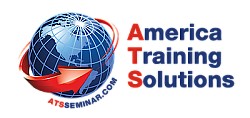

Length: 1 hour
Sponsored by: America Training Solutions
Residential Solar & Storage to Support Net Zero Goals


$40
Description
After a home has been made as energy efficient as possible, it can make sense to power that home on-site with rooftop solar panels. This session will address if, when, and how much solar to add to efficient homes. We will address a second question regarding whether to add local energy storage at the same time, later, or not at all, and how much storage capacity is recommended. We will consider typical payback periods – financial, energy, and greenhouse gas emissions – for each option and some rules of thumb for determining whether those investments are worthwhile under various conditions. Lastly, we will consider how the attractiveness of solar and energy storage can differ...
Presented By: Chris Calwell,
Energy Storage, Renewables, and EV Consultant, Educator
Credits: 1 AIA HSW + 1 GBCI (USGBC/CAGBC) + 1 AIBD Primary + 1 Net Zero (ZNCD) + 1 Sustainable Design + 1 AIBC Core LU + 1 AAA Structured LU + 1 OAA, OAQ, SAA, MAA, AAPEI, NWTAA + 1 Climate Action (OAA) Length: 1 hour
Sponsored by: America Training Solutions


How do you get an existing home to net zero carbon?


$40
Description
This session will present a systematic approach to assessing residential remodeling projects for decarbonization opportunities, viewed through the lens of a Northern California custom home renovation. The project incorporated electric replacements for all natural gas appliances, a total HVAC swap, a solar array, and battery energy storage, along with an innovative approach to upgrading the building’s thermal enclosure to reduce heating and cooling loads while improving comfort. Driven by the drought-prone location and local water supply constraints, advanced water conservation measures are also featured.
Presented By: Ann Edminster, Zero-Energy/Emissions Consultant, Educator, Author
Credits: 1 AIA HSW + 1 GBCI (USGBC/CAGBC) + 1 AIBD Primary + 1 Net Zero (ZNCD) + 1 Sustainable Design + 1 AIBC Core LU + 1 AAA Structured LU + 1 OAA, OAQ, SAA, MAA, AAPEI, NWTAA + 1 Climate Action (OAA)


Length: 1 hour
Sponsored by: America Training Solutions
Embodied Carbon: Incorporating Climate-Friendly Materials in Residential Projects


$40
Description
This course aims to educate architects and engineers about the importance of understanding the climate impact of the products they specify in building designs. Participants will be introduced to the basic concepts of embodied carbon emissions for building products, learning about the extent of the problem and the key strategies for measuring and reducing these climate impacts. Embodied carbon will be centered in a multi-criteria approach to product selection that prioritizes health impacts, resource efficiency, cost, code-compliance, and energy efficiency alongside embodied carbon to demonstrate how this approach can lead to stacked benefits. Two...
Presented By: Chris Magwood,
Manager, Carbon-Free Buildings at RMI; Board Member, Builders for Climate Action; Chief Climate Officer, Okomwrks Labs
Credits: 1 AIA HSW + 1 GBCI (USGBC/CAGBC) + 1 AIBD Primary + 1 Net Zero (ZNCD) + 1 Sustainable Design + 1 AIBC Core LU + 1 AAA Structured LU + 1 OAA, OAQ, SAA, MAA, AAPEI, NWTAA + 1 Climate Action (OAA) Length: 1 hour
Sponsored by: America Training Solutions


Designing for Zero Carbon: A Case Study of Sonoma Clean Power’s Grid Optimal Headquarters


$40
Description
Sonoma Clean Power (SCP) is a not-for-profit public electricity provider that provides customers in California's Sonoma and Mendocino counties with clean energy from renewable resources. To reflect its commitment to fight climate change, SCP tapped San Francisco–based architecture firm EHDD to fully renovate a 1979 commercial office building in downtown Santa Rosa as a headquarters and a showcase for zero-carbon design, technologies, and operation. The project is also the initial pilot project for the Grid Optimal Initiative—a joint program of the New Buildings Institute and USGBC devoted to lowest-cost decarbonization of the electricity grid.
EHDD principal-in-charge Brad Jacobson will talk through the implications of designing and operating for zero carbon instead of zero energy, including examples of microgrid...
Presented By: Brad Jacobson, FAIA, LEED AP, DBIA
Credits: 1 AIA HSW + 1 GBCI (USGBC/CAGBC) + 1 AIBD Elective + 1 Net Zero (ZNCD) + 1 Sustainable Design + 1 AIBC Core LU + 1 AAA Structured LU + 1 OAA, OAQ, SAA, MAA, AAPEI, NWTAA + 1 Climate Action (OAA)


Length: 1 hour
Sponsored by: America Training Solutions
Ethics and the Environment: An Architect’s Intent, Process, and Path to Net Zero
"Thanks for a great presentation regarding a well needed subject."
- Franklin


$10
Description
The topic of ethics has never been more prevalent for today’s architects, especially in our obligation to the environment. With new data constantly published about the human toll on today’s world, the construction industry must take purposeful steps to not only reduce the environmental impact in the building process but also promote a sustainable design that will last for generations. This one-hour presentation will discuss ethics and the architect’s obligation to the environment. We’ll review what it means to meet Net-Zero goals and the outside influences, including cost, that may pose challenges.
Credits: 1 AIA HSW + 1 GBCI (USGBC/CAGBC) + 1 AIBD Primary + 1 AIBC Core LU + 1 AAA Structured LU + 1 OAA, OAQ, SAA, MAA, AAPEI, NWTAA

Length: 1 hour
Sponsored by: America Training Solutions
Making Zero Possible: Efficiency-First Decarbonization
"An excellent overview of the many tools and concepts in moving to net zero in building design."
- Ann


$25
Description
Presented By: Jack Rusk, CEO and Co-founder, C.Scale
Credits: 1 AIA HSW + 1 GBCI (USGBC/CAGBC) + 1 AIBD Primary + 1 Net Zero (ZNCD) + 1 Sustainable Design + 1 AIBC Core LU + 1 AAA Structured LU + 1 OAA, OAQ, SAA, MAA, AAPEI, NWTAA + 1 Climate Action (OAA)


Length: 1 hour
Sponsored by: America Training Solutions
Understanding Material Hazard, Exposure and Risk in the Built Environment
"Great, informative and very interesting course. Thank you for providing this on-demand webinar."
- William
FREE
Description
Product and materials selection is a critical aspect of the building design and construction process. A variety of factors drive materials selection decisions, including sustainability, health and wellness issues like indoor air quality, and the desire for innovative, functional, state-of-the-art building spaces that meet 21st century needs.
Credits: 1 AIA HSW + 1 AIBD Primary + 1 AIBC Core LU + 1 AAA Structured LU + 1 OAA, OAQ, SAA, MAA, AAPEI, NWTAA
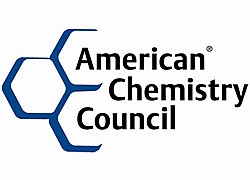
Length: 1h
Sponsored by: American Chemistry Council (ACC)
LEED Pilot Credit #103: Integrative Analysis of Building Materials
FREE
Description
In the materials selection process, builders seek to balance numerous product performance attributes, including durability, aesthetics and health, safety and environmental impacts. Transparency and life cycle thinking are central components of a robust materials selection process, one that enables builders to choose the most appropriate materials for their project The U.S. Green Building Council now offers an innovative LEED pilot credit (#103), Integrative Analysis of Building Materials, to encourage building project teams to evaluate products and materials using available life cycle information to identify those that have positive environmental, health and safety impacts. The credit informs project team decisions by providing access to information shared by building materials manufacturers on their product’s life cycle impacts.
Credits: 1 AIA HSW + 1 AIBD Elective + 1 AIBC Core LU + 1 AAA Structured LU + 1 OAA, OAQ, SAA, MAA, AAPEI, NWTAA

Length: 1h
Sponsored by: American Chemistry Council (ACC)
Mastering Timber: How, When, and at What LOD to Introduce Carbon-Fixing Assemblies into Architectural Design
FREE
Description
Introduce wood structure and biogenic material alternatives at the proper level of detail in schematic design.
Credits: 1 AIA HSW + 1 AIBD Primary + 1 Sustainable Design + 1 AIBC Core LU + 1 AAA Structured LU + 1 OAA, OAQ, SAA, MAA, AAPEI, NWTAA + 1 Climate Action (OAA)

Length: 1 hour
Sponsored by: QWEB (Quebec Wood Export Bureau)
LEED Pilot Credit #103: Integrative Analysis of Building Materials


FREE
Description
In the materials selection process, builders seek to balance numerous product performance attributes, including durability, aesthetics and health, safety and environmental impacts. Transparency and life cycle thinking are central components of a robust materials selection process, one that enables builders to choose the most appropriate materials for their project.
The U.S. Green Building Council now offers an innovative LEED pilot credit (#103), Integrative Analysis of Building Materials, to encourage building project teams to evaluate products and materials using available life cycle information to identify those that have positive environmental, health and safety impacts. The credit informs project team decisions by providing access to information shared by building materials manufacturers on their product’s life cycle impacts.
Credits: 1 AIA HSW + 1 GBCI (USGBC & CAGBC) + 1 IDCEC + 1 AIBC Core LU + 1 AAA Structured LU + 1 OAA, OAQ, SAA, MAA, AAPEI, NWTAA

Length: 1h
Sponsored by: American Chemistry Council (ACC)
Understanding Hazard Exposure and Risk in the Built Environment
FREE
Description
Product and materials selection is a critical aspect of the building design and construction process. A variety of factors drive materials selection decisions, including sustainability, health and wellness issues like indoor air quality, and the desire for innovative, functional, state-of-the-art building spaces that meet 21st century needs.
Credits: 1 AIA HSW + 1 AIBC Core LU + 1 AAA Structured LU + 1 OAA, OAQ, SAA, MAA, AAPEI, NWTAA

Length: 1h
Sponsored by: American Chemistry Council (ACC)
Thermally Modified Hardwood and its Role in Architectural Design
FREE
Description
This presentation will provide information on the thermal modification process; discuss the environmental advantages and performance features of Thermally Modified Hardwood (TMH); and showcase Thermally Modified Hardwood in both outdoor and indoor applications. At the conclusion, specifiers will be comfortable sourcing this unique building material.
Credits: 1 AIA HSW + 1 AIBD Primary + 1 AIBC Core LU + 1 AAA Structured LU + 1 OAA, OAQ, SAA, MAA, AAPEI, NWTAA

Length: 1 hour
Sponsored by: HMA - Hardwood Manufacturers Association
Shining Light on EPDs - Comparing the Environmental Performance of Building Products


FREE
Description
Over the past few years, demand for tools like Environmental Product Declarations has been growing among the green building industry. Primarily intended for a specialized audience, life cycle assessments and their results displayed in standardized documents named EPDs are out in the open for everyone to see. However, EPDs are not mere documentation and are very technical. Green Building Programs, such as LEED, requiring EPDs for credit achievement have forced unspecialized professionals to understand it. This course is intended to give you the tools you need to get your head around EPDs and be able to compare them if needed.
Credits: 1 AIA HSW + 1 GBCI (USGBC/CAGBC) + 1 LEED SPECIFIC - BD+C + 1 LEED SPECIFIC - ID+C + 1 AIBD Elective + 1 AIBC Core LU + 1 AAA Structured LU + 1 OAA, OAQ, SAA, MAA, AAPEI, NWTAA

Length: 1 hour
Sponsored by: Vertima
Biophilic Design for All: Affordable, Low-Maintenance Materials That Mimic Nature


FREE
Description
Most architects have heard about biophilic design and agree with the concept of bringing the outdoors inside. However, very few designers take purposeful steps to incorporate it into their plans. Designers may assume that biophilic design is expensive or high maintenance, reserved for only those high-end projects. One may assume that bringing nature inside is complicated and requires customization. An architect may assume that some projects don’t warrant biophilia, like a warehouse. In this one-hour course, we’ll address those assumptions that hold architects back. We’ll introduce a simulated-wood product that mimics nature and delivers that positive human response. You’ll see numerous design ideas and applications that exemplify economical and low maintenance solutions for any project type. At the end of...
Credits: 1 AIA HSW + 1 GBCI (USGBC/CAGBC) + 1 AIBD Primary + 1 AIBC Core LU + 1 AAA Structured LU + 1 OAA, OAQ, SAA, MAA, AAPEI, NWTAA

Length: 1h
Sponsored by: Modern Mill
Shining Light on EPDs - Comparing the Environmental Performance of Building Products
FREE
Description
Over the past few years, demand for tools like Environmental Product Declarations has been growing among the green building industry. Primarily intended for a specialized audience, life cycle assessments and their results displayed in standardized documents named EPDs are out in the open for everyone to see. However, EPDs are not mere documentation and are very technical. Green Building Programs, such as LEED, requiring EPDs for credit achievement have forced unspecialized professionals to understand it. This course is intended to give you the tools you need to get your head around EPDs and be able to compare them if needed.
Credits: 1 AIA HSW + 1 AIBC Core LU + 1 AAA Structured LU + 1 OAA, OAQ, SAA, MAA, AAPEI, NWTAA

Length: 1h
Sponsored by: Vertima
Mastering Timber: How, When, and at What LOD to Introduce Carbon-Fixing Assemblies into Architectural Design
FREE
Description
Introduce wood structure and biogenic material alternatives at the proper level of detail in schematic design.
Credits: 1 AIA HSW + 1 AIBD Primary + 1 Sustainable Design + 1 AIBC Core LU + 1 AAA Structured LU + 1 OAA, OAQ, SAA, MAA, AAPEI, NWTAA + 1 Climate Action (OAA)

Length: 1h
Sponsored by: QWEB (Quebec Wood Export Bureau)
Making Passive House Standard: 4+ Case Studies Showcasing the Adaptability of Passive House Design


FREE
Description
Buildings are responsible for a significant chunk of our world’s carbon emissions and their rate of impact is particularly high in dense, urban environments. In response, New York (among other cities) is seeing an uptick in low-energy, high-performance building standards, including Passive House, for their large multi-family and mixed-use buildings. While Passive House design can certainly be a powerful tool in reducing carbon emissions, buildings constructed to meet this standard have also proven to provide tenants with healthier living environments that are also more affordable to operate and maintain. From the initial successes of large-scale Passive House projects in NYC, are we able to scale up Passive House construction to other urban areas and beyond? Do technologies exist that will...
Credits: 1 AIA HSW + 1 GBCI (USGBC/CAGBC) + 1 AIBD Primary + 1 Sustainable Design + 1 AIBC Core LU + 1 OAA, OAQ, SAA, MAA, AAPEI, NWTAA + 1 Climate Action (OAA)

Length: 1h
Sponsored by: Rockwool
Shining Light on EPDs - Comparing the Environmental Performance of Building Products


FREE
Description
Over the past few years, demand for tools like Environmental Product Declarations has been growing among the green building industry. Primarily intended for a specialized audience, life cycle assessments and their results displayed in standardized documents named EPDs are out in the open for everyone to see. However, EPDs are not mere documentation and are very technical. Green Building Programs, such as LEED, requiring EPDs for credit achievement have forced unspecialized professionals to understand it. This course is intended to give you the tools you need to get your head around EPDs and be able to compare them if needed.
Credits: 1 AIA HSW + 1 GBCI (USGBC/CAGBC) + 1 LEED SPECIFIC - BD+C + 1 LEED SPECIFIC - ID+C + 1 AIBD Elective + 1 Sustainable Design + 1 AIBC Core LU + 1 AAA Structured LU + 1 OAA, OAQ, SAA, MAA, AAPEI, NWTAA + 1 Climate Action (OAA)

Length: 1 hour
Sponsored by: Vertima
Vinyl In Design - The Material for 21st- Century Building and Construction
FREE
Description
Vinyl plays a major role in the design and construction of modern buildings. It contributes to sustainability and to the wellness and resilience of people and their communities. This continuing education session will demonstrate the importance of achieving client performance goals using thoughtful, multi-attribute material selection criteria. It will also show how flawed prescriptive material choices can lead to unintended consequences.
Credits: 1 AIA HSW + 1 AIBC Core LU + 1 AAA Structured LU + 1 OAA, OAQ, SAA, MAA, AAPEI, NWTAA

Length: 1h
Sponsored by: Vinyl Institute

Featured
On-Demand Course
Download our App!


Upcoming Events
-

-

-
 Hospitality Building Solutions - Central
Hospitality Building Solutions - Central11-18-2025
-

